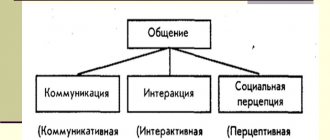Actual level of communication
Photo by SHVETS production: Pexels
Among other things, people naturally convey pure information. For example, they exchange content and verbalize observations. This is also necessary in everyday life: this creates orientation for oneself and others, since messages work in both directions.
So far, so good. If that was all, there would probably be no more nervous meetings or arguments with colleagues. Let's look at an example: a married couple is sitting in a car, the woman is driving, the man is in the front passenger seat. The husband says: “The traffic light is green.” How could the wife understand this statement?
? Of course, at the factual level, a statement is made about what color the traffic light shows. But this is said completely differently. You might think that the device itself is green.
Verbalization of feelings
What is verbal communication if not a way to use words to express the whole gamut of experienced emotions for a closed person, incapable and unaccustomed to expressing feelings through affection?
He can only express all the pent-up love, or jealousy, or even anger through words, and there is nothing wrong with that - sometimes the situation requires an explanation, and someone who does not know how to verbalize what is happening in his head may end up in a very sad situation . Verbal communication allows you to establish communication not only with the help of the words themselves, but also by changing the tone of voice, volume, and speed of speech. When expressing emotions, an experienced interlocutor can hear the essence behind the words, recognize a lie by the too fast pace of words spoken, the slightest hesitation and slips of the tongue.
The ability to communicate using verbal communication is invaluable in our time, it helps not only in work, but also in improving family relationships, and mastering the skill of high-quality oral speech can significantly improve your life.
Chest voice.
The chest voice deserves special attention when training your speech. The chest voice sounds much lower and stronger, people begin to associate the owners of such a voice with success and strength, such people are treated with great respect and sometimes even fear. On the contrary, many people do not take people with a thin, weak voice seriously. For a seller, a chest voice is an excellent tool for influencing clients; from experience, we can say that a chest voice helps increase sales by 20-30%, and by developing skills in using the voice, sales can be increased several times.
It is important to note that the chest voice is not a “gift of God”; it can be easily trained. Moreover, you can do this yourself without using any complex techniques. To increase personal sales, sellers are recommended to conduct short voice training sessions daily. It has also been noticed that in the morning the voice is always lower than in the evening, even professional singers note this, so try to conduct important negotiations in the first half of the day.
Paraverbalism in sales.
Paraverbals, as well as nonverbal communication with the client, are not always given due attention when training salespeople. Although a person receives about 90% of information through these methods of communication. Many managers notice a drop in the results of many salespeople 2 months after employment, the main reason is a drop in the salesperson’s motivation and, as a result, the salesperson conveys less positive emotions to the client. For many sellers, the intonation of their voice changes greatly, the work begins to weigh on the seller, and he passes on these emotions to the buyer. Therefore, when working with experienced salespeople, you need to pay more attention to motivation and incentives for work and training in paraverbal and nonverbal communication.
Verbally - this is our difference from the other living world
Words that are composed into speech are the unit of our communication with you. We use them both in oral pronunciation and in writing. Or typing (typing on the keyboard), if we talk about realities that are closer to us. Such communication is divided depending on who plays what role: speaking - listening, writing - reading.
In order to maintain verbal communication at a high level, you need to develop its components. This is, first of all, vocabulary (what is it?). Reading books, listening to vocabulary, talking with intellectually developed people - all this significantly helps to replenish and expand your vocabulary.
When communicating in writing, it is very important to know the rules of punctuation in order to present information correctly. Often, by placing periods and commas incorrectly, you can distort the meaning or emphasize something wrong. We all remember the cartoon where you had to put the punctuation mark in the right way and save your life: “Execution cannot be pardoned.”
Speech and written communication solves several problems at once:
- Communicative – ensures interaction between people in its large-scale manifestations.
- Cognitive – a person gains knowledge and new information.
- Cumulative – displaying accumulated knowledge (writing notes, books).
- Emotional - you can express your attitude to the world, feelings using words.
- Ethnic – unification of the populations of different countries (according to the language used).










